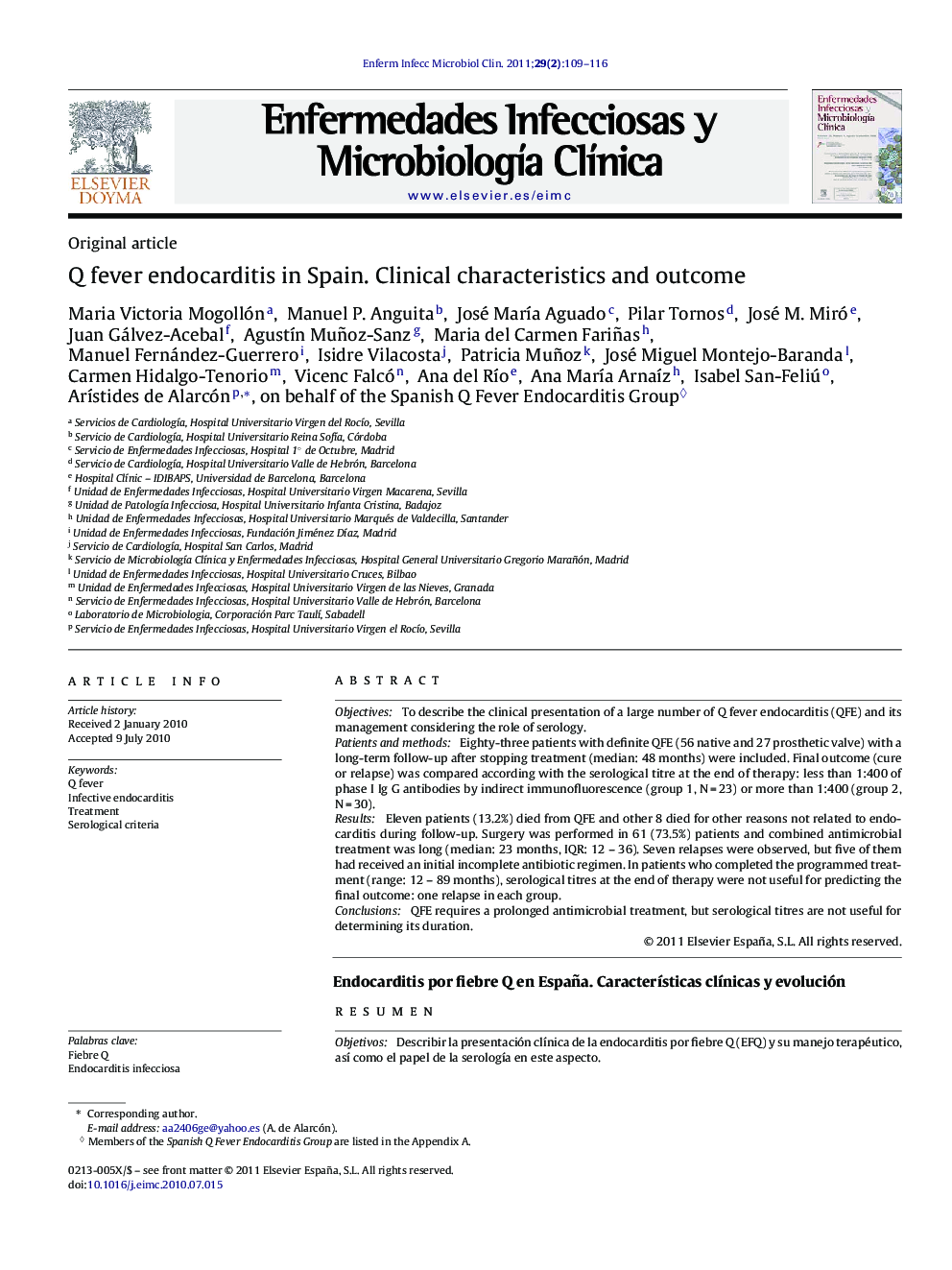| کد مقاله | کد نشریه | سال انتشار | مقاله انگلیسی | نسخه تمام متن |
|---|---|---|---|---|
| 3402003 | 1222695 | 2011 | 8 صفحه PDF | دانلود رایگان |

ObjectivesTo describe the clinical presentation of a large number of Q fever endocarditis (QFE) and its management considering the role of serology.Patients and methodsEighty-three patients with definite QFE (56 native and 27 prosthetic valve) with a long-term follow-up after stopping treatment (median: 48 months) were included. Final outcome (cure or relapse) was compared according with the serological titre at the end of therapy: less than 1:400 of phase I Ig G antibodies by indirect immunofluorescence (group 1, N = 23) or more than 1:400 (group 2, N = 30).ResultsEleven patients (13.2%) died from QFE and other 8 died for other reasons not related to endocarditis during follow-up. Surgery was performed in 61 (73.5%) patients and combined antimicrobial treatment was long (median: 23 months, IQR: 12 – 36). Seven relapses were observed, but five of them had received an initial incomplete antibiotic regimen. In patients who completed the programmed treatment (range: 12 – 89 months), serological titres at the end of therapy were not useful for predicting the final outcome: one relapse in each group.ConclusionsQFE requires a prolonged antimicrobial treatment, but serological titres are not useful for determining its duration.
ResumenObjetivosDescribir la presentación clínica de la endocarditis por fiebre Q (EFQ) y su manejo terapéutico, así como el papel de la serología en este aspecto.Pacientes y métodoSe incluyeron 83 casos de EFQ definidas (56 nativas y 27 protésicas) con un seguimiento prolongado después de la finalización del tratamiento (mediana de 48 meses). La evolución final (curación o recidiva) se comparó dividiendo los casos en dos grupos según el título serológico al final del tratamiento: menos de 1:400 para Ac Ig G en fase I mediante inmunofluorescencia indirecta (grupo 1, N = 23) o más de 1:400 (grupo 2, N = 30).ResultadosOnce pacientes (13.2%) murieron por EFQ y otros 8 lo hicieron durante el seguimiento por diversas razones no relacionadas con la endocarditis. Fueron operados 61 (73.5%) pacientes y el tratamiento antimicrobiano fue muy prolongado (mediana: 23 meses, RIQ: 12 – 36). Siete pacientes recidivaron al cesar el tratamiento, pero cinco de ellos no habían completado el inicialmente programado. En los pacientes que sí completaron el tratamiento antimicrobiano (rango: 12 – 89 meses), los títulos serológicos observados al final del mismo no fueron útiles para predecir la evolución final, observándose una recidiva en cada uno de los grupos.ConclusionesLa EFQ requiere un tratamiento antimicrobiano prolongado, pero los títulos serológicos no son un instrumento útil para determinar su duración
Journal: Enfermedades Infecciosas y Microbiología Clínica - Volume 29, Issue 2, February 2011, Pages 109–116